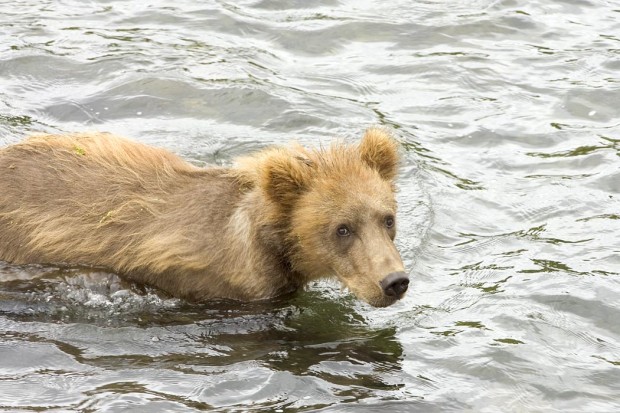We have much more to do and your continued support is needed now more than ever.
You Ask, We Answer: Why Pebble Mine is Bad News
We’ve been getting some really good questions about the proposed Pebble gold and copper mine, which poses unacceptable risks to the wildlife of Bristol Bay, Alaska. Here we do our best to answer them.

A: The Pebble gold and copper mine would be both an underground and open pit mine (click here to see amazing images of open pit mines from space)–about two miles wide and several thousand feet deep. Most of the rock removed from the pit will be waste rock, which often contains acid-generating sulfides, arsenic, lead, mercury, and cyanide. Once the minerals are processed and recovered, the remaining rock becomes another form of mining waste called tailings, which also can contain up to three dozen dangerous chemicals.
The Pebble mine will discharge up to 10 billion tons of these toxic tailings that will need to be stored forever behind massive earthen dams. The largest of the dams containing these toxic slurry lakes would be over 700 feet tall and 4 miles long.
Q: What makes Pebble mine so much more dangerous than other mines?
A: The Bristol Bay region in southwest Alaska–the proposed location of Pebble mine–is one of the worst places on earth for a mine (see some spectacular photos of Bristol Bay here). Remaining virtually undeveloped for thousands of years, this wildlife paradise is home to the world’s largest sockeye salmon run, as well as healthy populations of grizzly bears, wolves, moose, caribou and waterfowl.
Large copper mines are notorious for polluting waters while they are in operation, leaving the area toxic long after they are gone. If Pebble mine is built, toxic wastes will inevitably leak into surface and groundwater, causing serious pollution that threatens salmon and other wildlife. Plus, because Pebble mine would be built in one of the most active earthquake zones on earth, there’s a serious risk of the dams breaking and funneling massive amounts of mining pollution directly into the river systems.
Q: The mining industry may have gotten away with polluting our waters 20 to 30 years ago, but don’t they face stiffer penalties now?
A: Mining practices have improved, but are far from perfect. Unfortunately, two “loopholes” in the Clean Water Act have allowed mine developers to circumvent the purpose of this critical law, making it common industry practice over the last 30 years for mines to dam up the nearest river valley and treat wetlands and streams impounded by the dam as a toxic waste dump. According to the EPA, the hard rock mining industry is the single largest source of toxic waste and one of the most destructive industries in the country.
One recent example is the Kensington mine in southeast Alaska, which was recently allowed to completely drain a beautiful alpine lake in the Tongass National Forest and fill it with mining waste–killing all fish and destroying the aquatic habitat.
Q: In these difficult economic times, shouldn’t we be careful about stopping mining projects?
A: While discharging wastes into wetlands, streams and lakes may be convenient for mining companies, it is not a necessary way of doing business. By stopping mines from dumping their toxic wastes in our lakes, rivers, and wetlands, it’s possible to reduce some of the negative environmental impacts of hard rock mines without prohibiting all hard rock mining.
Controversial projects such as the proposed Pebble mine in Alaska, Montanore mine in Montana, PolyMet mine in northern Minnesota, Mt. Emmons mine in Colorado, Haile mine in South Carolina, and numerous existing mines in the West and Appalachia are relying on the Clean Water Act loopholes to cut costs and justify extensive environmental damage. What’s more, the public is generally on the hook for the clean-up of abandoned mines. It is estimated that there are a half million abandoned mines across the country and that taxpayers will have to pay $32 – $72 billion to clean up the sites.
Q: How can the Environmental Protection Agency (EPA) affect development of the Pebble mine?
A: Under the Clean Water Act, the EPA can veto permits if the agency determines the discharge will have “unacceptable adverse impacts on water supplies, shellfish beds and fishery areas, wildlife, or recreational areas.”
Right now, the EPA is taking public comment on their assessment of impacts from large-scale mining on Bristol Bay–which highlights the significant threats from a project like Pebble mine–and they need to hear from you by July 23rd. If we don’t speak up now, Pebble mine could devastate this wilderness paradise and the rich community of wildlife that calls it home.





















